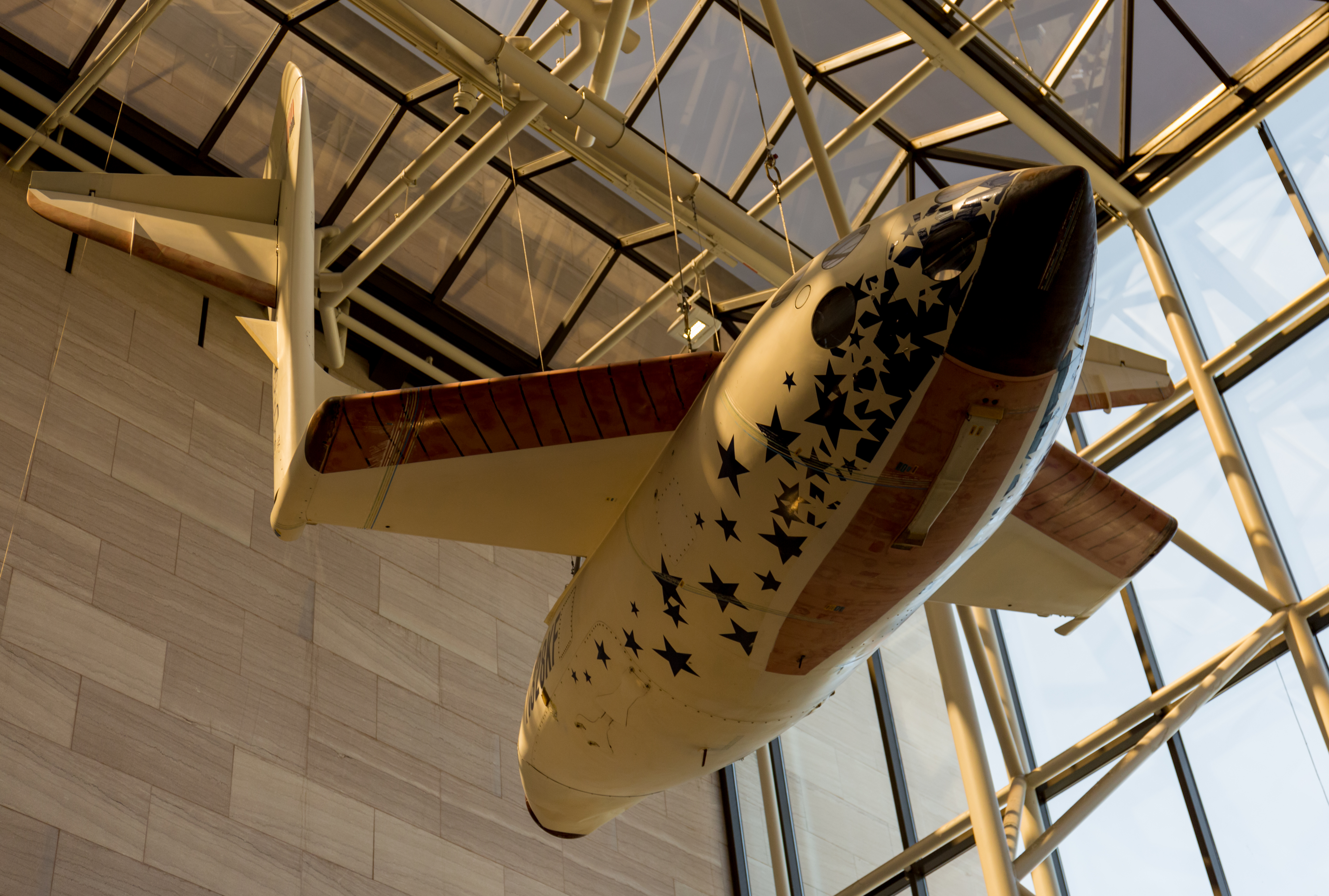
This week in rocket history, we look back at the first competition flight of the SpaceShipOne suborbital spaceplane to win the Ansari X Prize.
The Ansari X Prize began in the late 1990s with the goal of motivating private industry to pursue human spaceflight. To win the $10 million prize, teams had to fly three people to above 100 kilometers twice in two weeks. It was inspired by the Orteig Prize for crossing the Atlantic in the 1920s, which essentially began the commercial aviation industry.
Many teams signed up to compete in the competition, including:
- Armadillo Aerospace, which later did pioneering work on small propulsive landing reusable rockets
- Interorbital Systems, who are still trying to build an orbital rocket to launch small satellites
- Scaled Composites, maker of numerous experimental aircraft including the Rocket Racer, and the Roc, the world’s largest plane by wingspan
Formally called the Rutan Model 316, SpaceShip One is a two-stage rocket using a jet-powered aircraft as the first stage which carries the second stage rocket-powered space plane up to 50,000 feet where it is released. The spaceplane then fires its motor and climbs into space. To manage the forces of reentry, the spaceplane folds its wings into a high-drag “feathered” position where it is passively stable. Once through reentry, the wings are lowered again and the space plane glides to a runway landing.
SpaceShipOne did an extensive series of unpowered and powered test flights prior to attempting a spaceflight. Development started in 1999 and flight tests took place in 2003.

The first powered flight of SpaceShipOne was on December 17, 2003. It was mostly successful except for a landing gear failure, which caused some damage to the vehicle. The second powered flight was much smoother and reached an altitude of 30 kilometers with a flight time of 1 hour 16 minutes 27 seconds. The third flight reached 45 kilometers and was also well-controlled.
The fourth flight reached over 100 kilometers — the first non-governmental spacecraft to do so. However, this flight did not count as a competition flight for the X Prize because no public notice was given 60 days prior, per requirements.
The first actual competition flight took place on September 29, 2004, when SpaceShipOne was carried to an altitude of 14 kilometers and released. The only person on board was the pilot, Mike Melville. In the cabin with him were 180 kilograms of ballast representing two passengers and several personal items from the Scaled Composites team, including Burt Rutan’s slide rule, a copy of Charles Lindbergh’s book, and a teddy bear, the mascot of the Great North Air Ambulance Service. After a 77-second rocket burn and coast, the vehicle reached an apogee of 103 kilometers, above the Kármán line and in space. The descent and landing were nominal, completing the first flight of two required by the X Prize.
The ascent, however, was far from nominal.
Pilot Mike Mellvile fought a 190 degree per second roll during the engine burn. The roll was not completely under control until the spaceplane was out of the atmosphere and the reaction control thrusters could take over. The rocket motor could have burned longer, but it was shut down due to the roll when Mike knew he would get above 100 kilometers to win the prize. Post-landing analysis revealed that the roll was due to asymmetric thrust from the spaceplane’s single hybrid rocket motor, which may have been caused by improper packing of the solid propellant.

As well, the plane was traveling at Mach 2.7 at a low angle of attack because the pilot pulled up very steeply at the beginning of the burn, producing very little lift. This, combined with the speed, produced yaw instability in the plane, causing the roll. This flight profile had not been tested before. (The problem was fixed in the second competition flight by flying a flatter trajectory.) Mike inadvertently set a world record for most aileron rolls during a vertical climb.
The second flight was required to use the same space plane and fly no later than two weeks after the first flight. It did, giving Scaled Composites the $10 million prize.
After the second competition flight SpaceShipOne was immediately retired and now hangs in the atrium of the National Air and Space Museum in Washington, DC.
Seventeen years later, its successor, SpaceShipTwo, has yet to begin regular commercial flights. It is also incapable of reaching the 100-kilometer Kármán line, unlike SpaceShipOne, because it carries six passengers instead of two using the same performance motor.
More Information
Ansari X PRIZE (X PRIZE Foundation via Internet Archive)
Combined White Knight / SpaceShipOne Flight Tests (Scaled Composites via Internet Archive)
SpaceShipTwo Can’t Reach 100 Km Boundary of Space (Parabolic Arc)




 Join the Crew!
Join the Crew!
 Escape Velocity Space News
Escape Velocity Space News
0 Comments